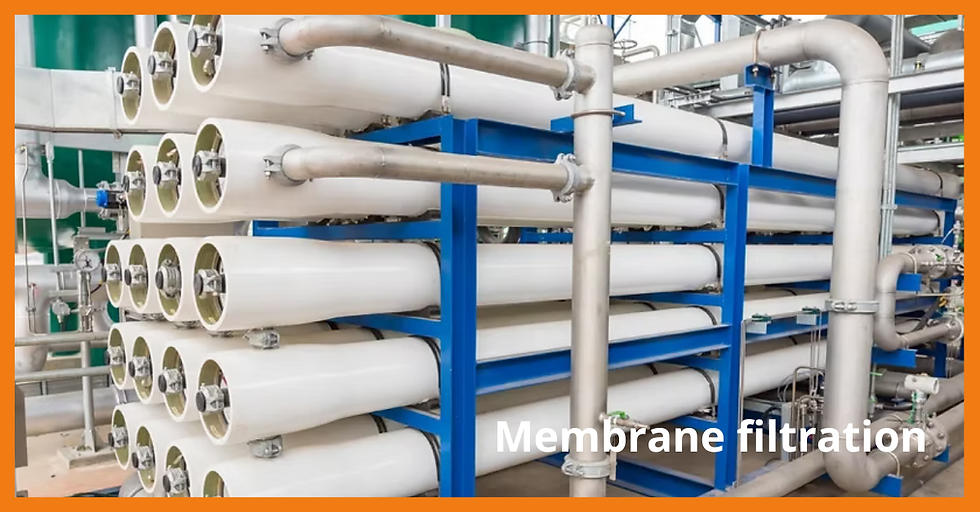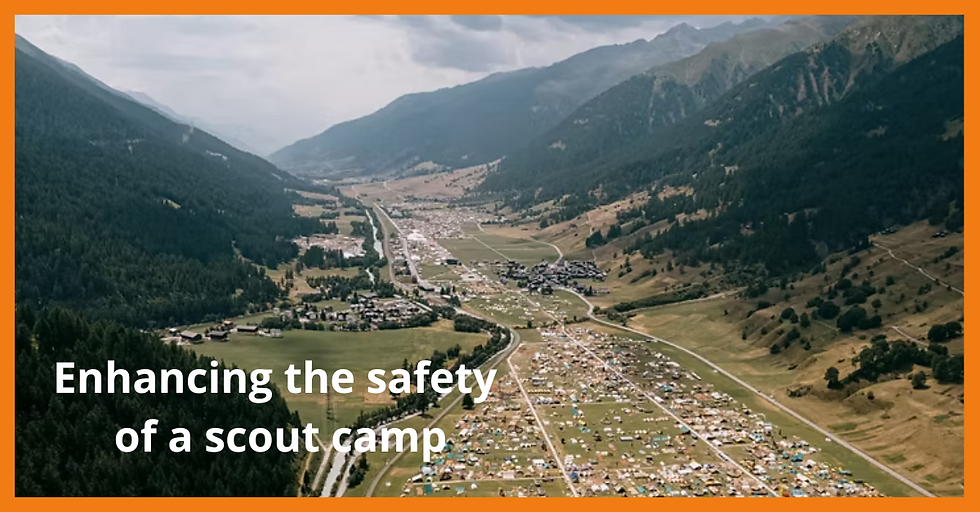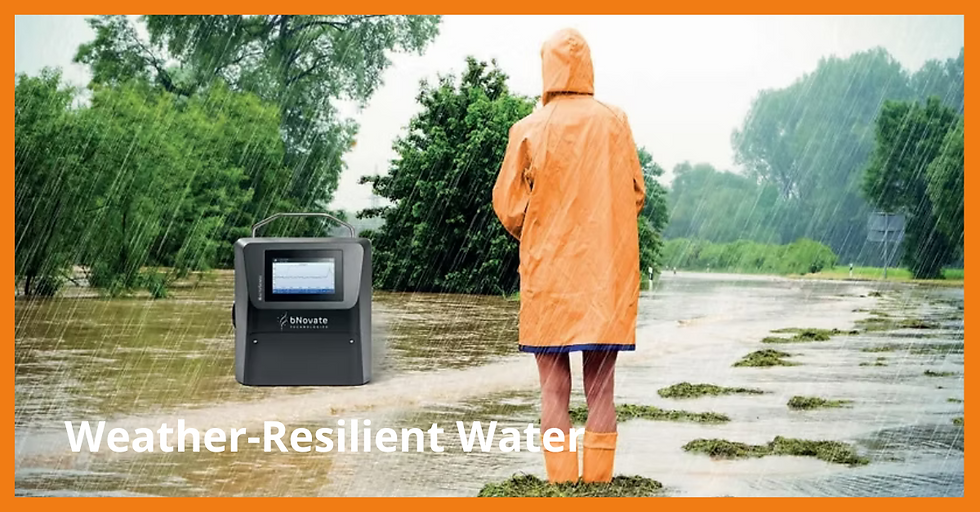Groundwater and drinking water distribution systems (DWDS)
- bNovate

- Jul 31
- 4 min read

Intergovernmental Panel on Climate Change (IPCC) experts are unanimous: the frequency of extreme weather events has increased and is expected to continue doing so.
High precipitation, snow melt and floods can lead, among others, to surface runoff and contamination of aquifers. As groundwater provides drinking water to at least 50% of the world‘s population, ensuring a safe and continuous supply of this vital resource is of paramount importance.
In 2018, severe floods in South-West Iceland led to contamination of some water production wells. Veitur Water Utilities, the largest provider in the region, implemented BactoSense to address the threat and ensure consumer safety.
A protected production area with many wells
Veitur Water Utilities provides water to approximately 150’000 people in South-West Iceland from four water production areas (Figure 1). The production capacity is approximately 2,400 L/S, but the annual production amounts to around 720 L/s, allowing for flexibility in selecting different wells at various times.

Some extraction wells in the production areas are prone to environmental microbial contamination, especially during violent weather events. These “red” wells are seasonally considered at risk and not used from October to April.
During the winter of 2018, severe floods led to the first-ever recorded contamination of other wells. Consequently, the required capacity of sufficient quality could not be supplied. Following this event, three additional stable quality wells were commissioned, increasing the production capacity in extreme weather up to 1165 L/s (Table 1).

A new approach with online microbial monitoring
The 2018 event prompted Veitur Water Utilities to seek new methods for monitoring water microbial parameters, ensuring production while guaranteeing consumer safety. The usual method relies on cultures and requires substantial handling and time.
It is therefore not adapted to fast and sensitive surveillance. Veitur Water Utilities decided to use the BactoSense online flow cytometer, which allows for a quick, on-site determination (about 30 minutes per analysis) of microbiological concentration (Figure 2).

Adopting BactoSense online to watch over sources and help make the exploitation decision
The Total Cell Count per mL (TCC) was the parameter selected to evaluate the complete microbial landscape. TCC was monitored, first in one well (V5) in 2019, then in four wells (V5, V12+V13, V19) in 2020. V5 and V19 are considered “red” wells, while V12 and V13 were used all year long.
Initial results demonstrated the robustness and sensitivity of BactoSense compared to conventional methods, as well as the expansion of the incomplete view provided by plating through continuous measurement by the instrument (Figure 3).
The non-uniform relationship between TCC/mL and microbial plating at 22°C may arise from the complexity of the microbial community [3]. Nonetheless, a TCC value firmly surpassing its baseline indicates a clear microbial risk and can be used as an aid in identifying the stable or problematic sources.

Monitoring TCC also allowed setting criteria to decide whether the groundwater could be utilised or not. In a first cautious approach, three water qualities were defined:

Figure 4 presents the continuous analysis of the groundwater from well V5 in 2019. Regarded as a “red” well, V5 would usually be shut down from October to April.

However, BactoSense indicates that most of the time, its TCC value falls within the green zone. During those periods, the well provides high-quality water, suitable for consumption. By using BactoSense to determine the water quality, the yearly exploitation window is significantly extended. The monitoring was extended to more wells in 2020.
The results shown in Table 2 present a significant increase in production capacity per well. Veitur Water Utilities had the visibility and confidence to decide which wells were stable, as well as to determine when to extract less from wells that could be more problematic.
It increased production capacity and helped ensure that water demand was met throughout the year, with enhanced protection for consumers. BactoSense enabled the safe distribution of water from extraction wells in South-West Iceland, which were previously considered too prone to contamination.

BactoSense for the real-time microbial monitoring of groundwater during extreme weather events
The implementation of BactoSense by Veitur Water Utilities enhanced the quality control and safe distribution of water from extraction wells that were usually considered too prone to contamination, limiting the overuse of other aquifers.
They could increase their production capacity of high-quality water, better assess risks, and reject wells when water quality was not high, ensuring consumers’ safety.
Overall, BactoSense brings an increased knowledge of the seasonal variability and dynamics of raw water. It can be implemented to monitor microbial quality of groundwater wells in real time, particularly during extreme weather events. This leads to a safer, more optimal and sustainable use of water resources.
Benefits of using BactoSense
Enhanced quality control and safe distribution of water from extraction wells that were usually considered prone to contamination, limiting the overuse of other aquifers;
Increased production capacity of high-quality water;
Better risk assessment;
Increased knowledge of the raw water seasonal variability and dynamics.
Book a demo today to explore how BactoSense can mitigate the risk of contamination, especially during extreme weather events.










Comments